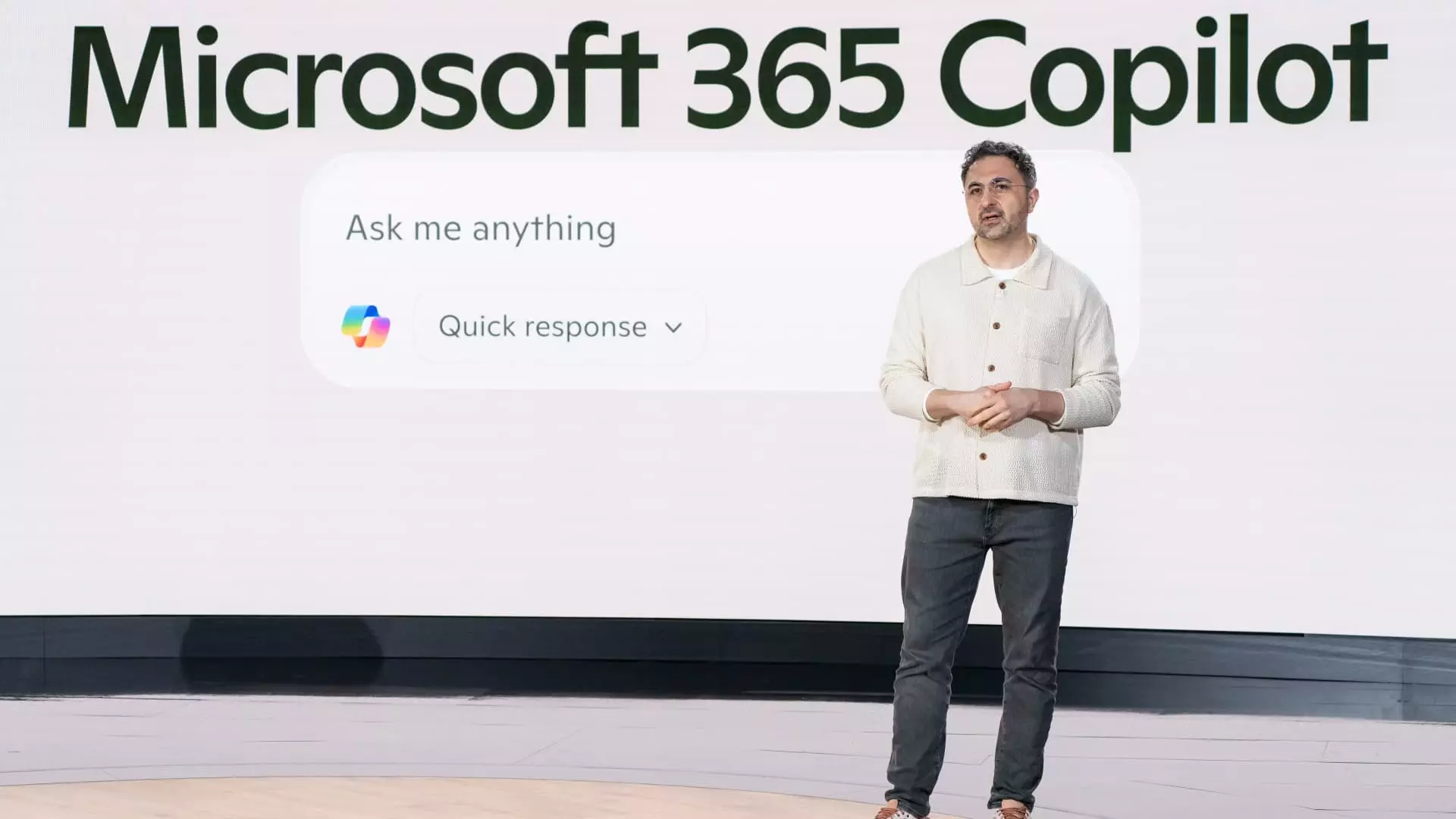In a world characterized by cutthroat competition and rapid innovation, sticking to a conservative timeline in artificial intelligence development might seem counterintuitive. However, Microsoft’s approach, championed by its AI CEO Mustafa Suleyman, is strikingly pragmatic. Instead of racing to develop state-of-the-art models, Microsoft is strategically choosing to delay its forays into the technological frontier—effectively opting for an ‘off-frontier’ strategy. This calculated postponement is not a sign of incompetence; rather, it’s a reflection of a nuanced understanding of the market, resource management, and consumer needs.
Suleyman argues that waiting to see how initial models perform provides Microsoft with a substantial advantage. By observing competitors, Microsoft can avoid unnecessary expenses and focus on specific, high-impact use cases rather than spreading itself too thin across a myriad of projects. While the allure of leading the charge in AI innovation is formidable, Microsoft’s strategy highlights one of the central traits of successful business: patience. In a sector driven by fads, being the ‘second mover’ allows for a more refined product development process and ensures that resources are utilized intelligently.
Strategic Partnerships: A Double-Edged Sword
The intricate relationships Microsoft has fostered with companies like OpenAI and CoreWeave demonstrate both strength and vulnerability. Microsoft has invested approximately $13.75 billion into OpenAI, creating a powerful synergy that has incorporated advanced AI models into Microsoft’s products like Bing and Windows. This partnership has proven fruitful; however, the shifting dynamics signify potential challenges ahead.
A burgeoning tension can be detected in the tech landscape, particularly as OpenAI explores collaborations beyond Microsoft, such as with Oracle on the Stargate project. This could indicate that the balance of power is gradually tilting in the favor of OpenAI, propelling it to pursue autonomy. For Microsoft, the implications are twofold: relying on a partner who is simultaneously becoming a competitor presents risks. But it also signifies an opportunity to recalibrate its internal AI strategies, reinforcing the mission of achieving self-sufficiency in AI development.
The Future of Copilot: Innovation Through Memory
One of Microsoft’s innovative ventures is the development of its Copilot assistant, aimed at streamlining productivity while engaging users on a deeper level. The introduction of memory capabilities is a clear attempt to enhance user experience, allowing Copilot to retain crucial information that can facilitate smoother interactions. This concept echoes the functionality already established by OpenAI with ChatGPT, a move that illustrates how competition often propels innovation.
However, reliance on OpenAI’s technological advancements raises questions about Microsoft’s unique identity in the AI domain. While it’s crucial to innovate, there’s also an unsettling worry that too much dependence on a single partner might stifle Microsoft’s distinct voice in the crowded technology arena. As they venture into creating proprietary features that learn and adapt, one must wonder whether these innovations will stand independent of their association with OpenAI. The future of Copilot may not just define Microsoft’s trajectory in AI, but could also shape the broader landscape of technological interactions.
Long-Term Vision: Betting on AI Autonomy
Suleyman’s vision for Microsoft’s AI future revolves around internal capabilities that advance from solid fundamentals rather than merely chasing fleeting trends. With an emphasis on building strong internal teams and substantial computational power, Microsoft is clearly laying the groundwork for a self-sufficient AI ecosystem. This long-game perspective is commendable, particularly in a tech-driven world that often prioritizes immediate results over sustainability.
Pushing against the tide of urgency, Suleyman implies that quality, relevance, and strategic alignments will outperform rapid but potentially shallow technological advancements. This is a bold assertion for a sector that thrives on urgency, revealing a center-right business philosophy that values prudent investment over reckless speed. As the tech industry continues to push the boundaries of AI, Microsoft’s dedicated focus on creating a robust foundation will likely provide the stability necessary for enduring success.
Microsoft positions itself as a calculated player in the AI game, prioritizing strategic foresight over hasty advancements. While some may perceive its delay in creating cutting-edge models as a detriment, the intelligent focus on partnerships, innovative features, and long-term autonomy underscores a mature understanding of the technology landscape. Moving forward, Microsoft’s balanced approach may not just lead it through uncertain waters but also redefine what it means to be a leader in the evolving world of artificial intelligence.

